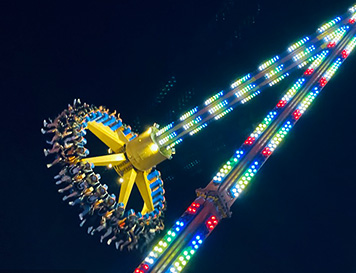


The combination of electronics and mechanics in amusement rides ensures thrilling, safe experiences with precise control, real-time adjustment.
The operation of modern amusement rides is a finely-tuned blend of mechanical engineering and electronic control systems. The combination of these two fields ensures that thrill rides are not only thrilling but also safe and reliable. From the motion of a roller coaster to the precise control of speed and braking, electronics and mechanics must work together seamlessly to create a smooth and exciting experience for riders.
The mechanical systems in an amusement ride are the components responsible for movement and physical operation. These include motors, gears, levers, pulleys, and hydraulic systems that generate motion and force. In rides like roller coasters, the mechanical elements ensure that cars accelerate, decelerate, and navigate the track with precision.
For instance, roller coasters rely on a combination of chain lifts and magnetic launch systems to propel riders. Hydraulics or pneumatics might also be employed for rides that feature rapid movements, such as drop towers or swings, providing smooth, controlled motion. These systems must be designed to withstand the stresses of high-speed movement and the dynamic forces exerted by riders, ensuring the ride’s reliability over time.
While the mechanics handle the physical motion, electronics manage the ride’s operations. A ride’s electronic control system typically includes microprocessors, sensors, and programmable logic controllers (PLCs) that monitor and adjust variables such as speed, direction, and braking. These systems ensure that the mechanical components function safely and in sync, creating the thrill without compromising safety.
For example, in a roller coaster, electronics control the speed and timing of the motor systems that launch and stop the cars. The control system continuously adjusts the motor speeds to maintain the desired acceleration and deceleration throughout the ride. Additionally, safety-critical functions such as emergency stops, restraints, and monitoring systems are all powered by electronics, which help detect and respond to potential issues in real-time.
Sensors play a crucial role in modern amusement rides, providing continuous feedback on the ride’s performance. These sensors monitor various parameters, such as speed, pressure, and load, ensuring that the mechanical systems operate within safe limits. For example, load sensors measure the distribution of weight on a ride, such as a Ferris wheel or a spinning ride, to ensure that it is balanced and stable. Speed sensors, meanwhile, track the velocity of the ride vehicles to prevent dangerous levels of speed.
In some rides, such as drop towers or roller coasters, proximity sensors detect the position of cars along the track or at critical points in the ride. This data is essential for synchronizing the motion of the ride and avoiding collisions or misalignments. These sensors feed data to the electronic control system, which then makes real-time adjustments to ensure smooth operation and rider safety.
The real power of amusement rides comes from the coordination between mechanical systems and electronics. For example, in a roller coaster, the mechanical components—such as motors and gears—work in tandem with the electronic control system, which governs their timing and synchronization. The electronics monitor feedback from sensors and adjust the mechanical operations to maintain optimal performance.
In more complex rides, such as those involving multiple stages or varying speeds, the integration of electronics and mechanics is even more critical. The ride’s control system must continuously adjust the mechanical components in response to data from sensors, ensuring the ride runs smoothly and safely. Whether it’s a roller coaster, a spinning ride, or a drop tower, the coordination between electronics and mechanics allows for a highly dynamic and immersive experience.
The combination of electronics and mechanics is the foundation of modern amusement ride design. Mechanical systems provide the physical motion, while electronics enable precise control, safety monitoring, and real-time adjustments. The seamless integration of these two components ensures that rides are thrilling yet safe, offering riders an exciting and reliable experience. As technology continues to advance, the synergy between electronics and mechanics will continue to evolve, making amusement rides more sophisticated, immersive, and personalized.
